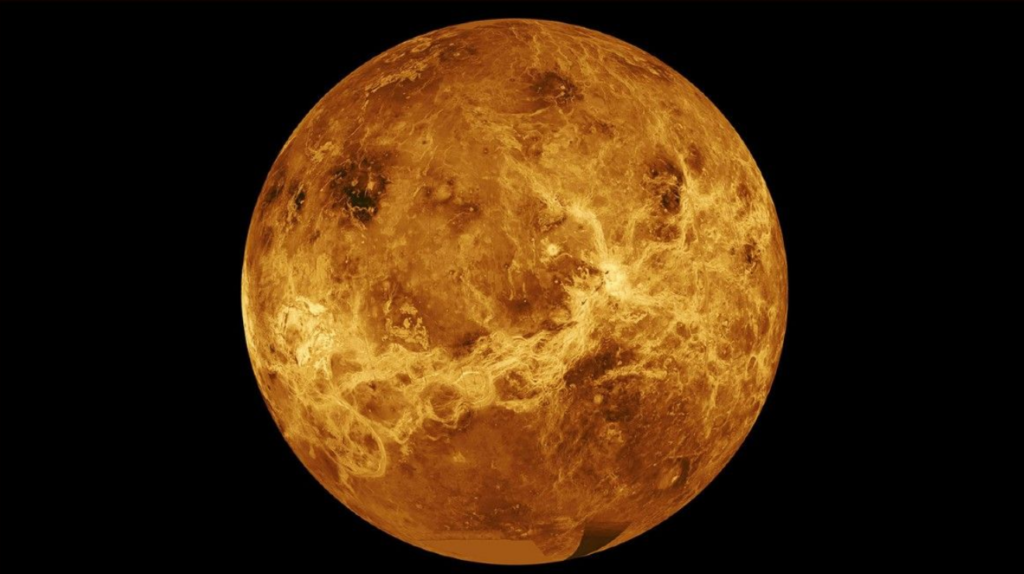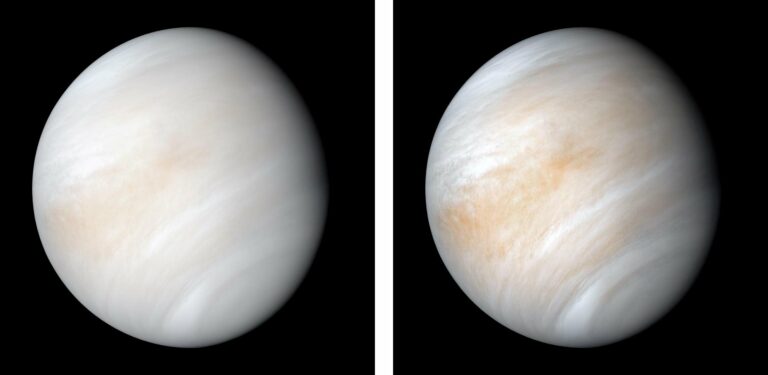A day on Venus lasts longer than a year on Venus. Here’s why
A recent investigation proposes that the extended and turbulent atmosphere enveloping Venus contributes to the lengthening of a day on the searing planet, contrasting it with its year.
Venus presents itself as an unusual and unwelcoming celestial body. Its size rivals that of Earth, yet it maintains an orbit around the sun approximately two-thirds closer than our own planet. Enveloped by a dense and hazardous atmosphere rich in carbon dioxide and sulfuric acid, Venus is subject to a runaway greenhouse effect, which elevates surface temperatures to a scorching 900 degrees Fahrenheit (475 degrees Celsius), rendering life unsustainable. Adding to the peculiarity, Venus takes 225 Earth days to complete its orbit around the sun, while its axial rotation requires 243 Earth days. Consequently, a year on Venus surpasses a day in duration.
According to a recent study conducted by Stephen Kane, an astrophysicist at the University of California, this anomaly may be attributed to Venus’s thick and tempestuous atmosphere.
Contrary to conventional perception, Kane suggests that the atmosphere plays a more integral role, impacting various aspects of the planet’s behavior, including its rotation speed.

Kane postulates that in the absence of its atmosphere, Venus’s rotation would synchronize with its orbit, a phenomenon termed tidal locking.
Tidal locking occurs when a celestial body, under the gravitational influence of a larger counterpart, aligns its rotational period with its orbital period, resulting in one side perpetually facing the larger body. Earth’s moon serves as a prominent example of tidal locking.
This process unfolds over extensive time spans, possibly spanning millions of years, as gravitational forces gradually align rotational and orbital periods.
To elucidate the sluggish rotation of Venus, Kane conducted calculations incorporating planetary dimensions, mass, gravity, and rotation rates. Surprisingly, his findings indicate that Venus should have achieved tidal locking within a mere 6.5 million years, a fraction of the solar system’s estimated age of 4.5 billion years.
Hence, the persisting misalignment prompts speculation regarding the influential role of Venus’s atmosphere.
Kane posits that vigorous atmospheric winds contribute to this phenomenon by inducing surface drag, thereby impeding rotation while mitigating the gravitational influence of the sun.
Paradoxically, solar energy serves as both an agent of tidal locking and a catalyst for atmospheric dynamics, impeding complete synchronization.
The intricate interplay between a planet’s atmosphere and its rotational behavior holds implications extending beyond Venus.
As astronomers explore exoplanets, potential habitats for life, Kane underscores the significance of distinguishing between Earth-like and Venus-like planets and considering atmospheric effects on rotation.
Furthermore, Kane highlights the limitations of current exoplanet detection methods, which rely on indirect observations and modeling based on solar system planets. A comprehensive understanding of near-tidally locked planets, exemplified by Venus, could enhance insights into exoplanetary systems and their potential habitability.
The findings of this study were published in the journal Nature Astronomy.
Do not forget to share your opinion with us to provide you with the best posts !




0 Comments